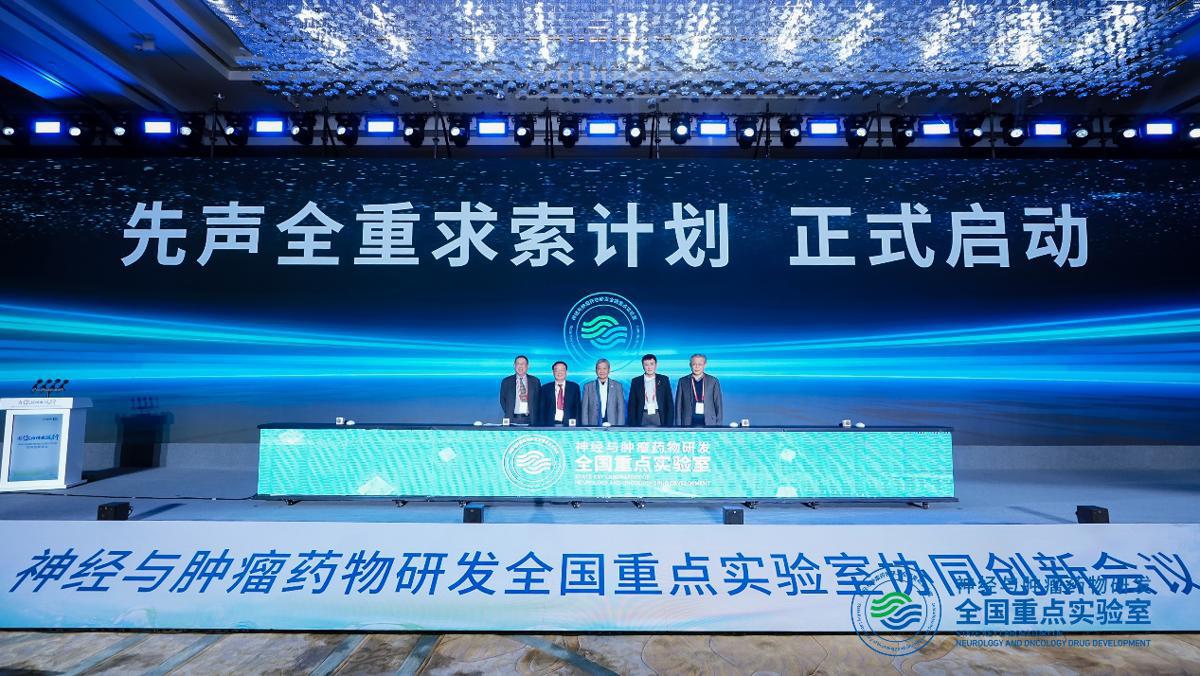
The Simcere State Key Laboratory Exploration Project involving an investment of 2 billion yuan ($276 million yuan) to address 10 major scientific challenges in neurology and oncology is released at a conference in Nanjing, Jiangsu province, on March 29, 2025. [Photo provided to chinadaily.com.cn]
The Simcere State Key Laboratory Exploration Project, involving an investment of 2 billion yuan ($276 million) to address 10 major scientific challenges in neurology and oncology, was launched at a conference focusing on collaborative innovation in Nanjing, Jiangsu province, on Saturday.
The five-year initiative aims to support groundbreaking research that could lead to disruptive innovations. An advisory committee composed of 11 academicians from the Chinese Academy of Sciences and the Chinese Academy of Engineering will provide strategic guidance for the project, encouraging non-consensus innovation, interdisciplinary collaboration, and the comprehensive use of emerging technologies.
Nanjing Jiangbei New Area, the National University Biomedical Regional Technology Transfer and Transformation Center (Nanjing, Jiangsu), and Simcere Pharmaceutical Group Ltd signed an in-depth strategic cooperation agreement at the conference. Nanjing Jiangbei New Area will oversee the matching of diversified capital for the project, with an investment of 2 billion yuan over the next five years.
Lu Weidong, a member of the standing committee of the Nanjing municipal Party committee, said that Nanjing has long prioritized the development of the biopharmaceutical industry as a key innovative industrial cluster, and the success of Simcere and the State Key Laboratory of Neurology and Oncology Drug Development is a prominent example of Nanjing's flourishing innovation ecosystem.
"Since last year, Jiangbei New Area has been actively fostering a comprehensive biopharmaceutical industry innovation ecosystem that integrates education, research, production, and application, centered around the Nanjing Biotech and Pharmaceutical Valley," said Lu, who is also secretary of the Party working committee of Jiangbei New Area.
"Moving forward, the district aims to further optimize the innovation ecosystem and establish a new highland for biopharmaceutical manufacturing," he said.
Ren Jinsheng, chairman of Simcere, said that the state key laboratory is a primary driving force behind the company's innovative drug research and development.
"We anticipate that the 'exploration project' will discover and unite a group of fearless innovators willing to break new grounds and take risks. We call for mutual support and collaborative innovation for the exploration and creation of unprecedented therapeutic methods," he said.
The 10 research directions supported by the initiative include treatment methods that reverse the high mortality and disability rates of stroke at a fundamental level, the discovery and validation of potential targets for precision treatment of neurodegenerative diseases and relevant therapy R&D, the discovery and validation of targets that significantly improve current tumor treatment outcomes and relevant drug development validation.
They also include therapeutic applications of RNA interference and mRNA technology in neurodegenerative diseases, cancer and infections, clinical applications of next-generation cell therapies and gene editing technologies, application of AI technology in target discovery and validation, and application of AI technology in predicting clinical efficacy and safety in drug development.
Also present at the Saturday event were two Nobel Prize laureates, six academicians from the CAS and CAE, government leaders from Nanjing and Haikou, Hainan's provincial capital, as well as nearly 700 representatives from top-tier hospitals and research institutions nationwide.
They discussed strategies for promoting collaborative innovation and development in the country's pharmaceutical industry.